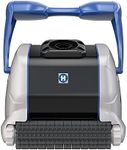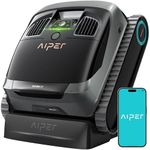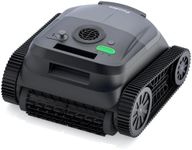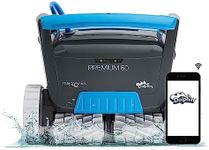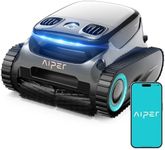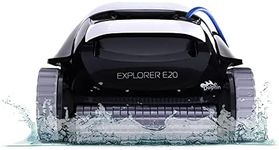Buying Guide for the Best Pool Cleaner Robots
Choosing a pool cleaner robot can make maintaining your pool much easier and more efficient. The right robot will save you time and effort, keeping your pool clean with minimal manual work. To find the best fit, it's important to understand the main features and specifications that affect how well a robot will work for your specific pool. Think about the size and shape of your pool, the type of debris you usually deal with, and how much automation you want. By focusing on the key specs, you can match a robot to your needs and enjoy a cleaner pool with less hassle.Cleaning CoverageCleaning coverage refers to the areas of the pool that the robot can clean, such as the floor, walls, and waterline. Some robots only clean the pool floor, while others can climb walls and scrub the waterline. If your pool collects debris on the walls or at the waterline, a robot with full coverage is important. For simple, flat-bottomed pools, a floor-only model may be enough. Consider where dirt and algae tend to build up in your pool to decide which level of coverage you need.
Pool Size CompatibilityPool size compatibility means the maximum pool size the robot can handle, usually measured in length or area. Robots have different cable lengths and power capacities, so a model designed for small pools may not work well in a large pool. If your pool is long or has a complex shape, make sure the robot's cable is long enough to reach all areas. Always check the recommended pool size for the robot and match it to your pool's dimensions for the best performance.
Filtration SystemThe filtration system is how the robot collects and traps debris. Some robots have fine filters for small particles like sand and dust, while others have larger baskets for leaves and twigs. If your pool gets a lot of fine dirt, choose a robot with a fine or ultra-fine filter. If you deal with larger debris, look for a model with a bigger basket or easy-to-clean filter. Think about the typical debris in your pool to pick the right filtration system.
Navigation and Smart FeaturesNavigation and smart features determine how the robot moves and cleans. Basic models move randomly, while advanced ones use smart mapping to cover the pool efficiently and avoid missing spots. Some robots have programmable cleaning cycles, remote controls, or app connectivity. If you want a set-and-forget experience or have a pool with obstacles, a robot with smart navigation is helpful. For simple pools, basic navigation may be enough.
Cleaning Cycle TimeCleaning cycle time is how long the robot takes to complete a cleaning session. Shorter cycles are good for quick cleanups, while longer cycles are better for thorough cleaning. Some robots let you choose between different cycle lengths. If you use your pool often and want it ready quickly, a shorter cycle is useful. If you want deep cleaning, look for a robot with longer or adjustable cycles.
Ease of MaintenanceEase of maintenance refers to how simple it is to clean and care for the robot itself. Some robots have top-access filter baskets that are easy to remove and rinse, while others require more effort. If you want a hassle-free experience, look for a model with easy-access filters and simple parts. Consider how often you'll need to empty the filter and how easy it is to do so, especially if you plan to use the robot frequently.
Weight and PortabilityWeight and portability affect how easy it is to move the robot in and out of the pool. Lighter robots are easier to handle, especially if you need to lift them often. Some models come with caddies or handles for easier transport. If you have trouble lifting heavy objects or need to store the robot between uses, consider a lighter or more portable model.
